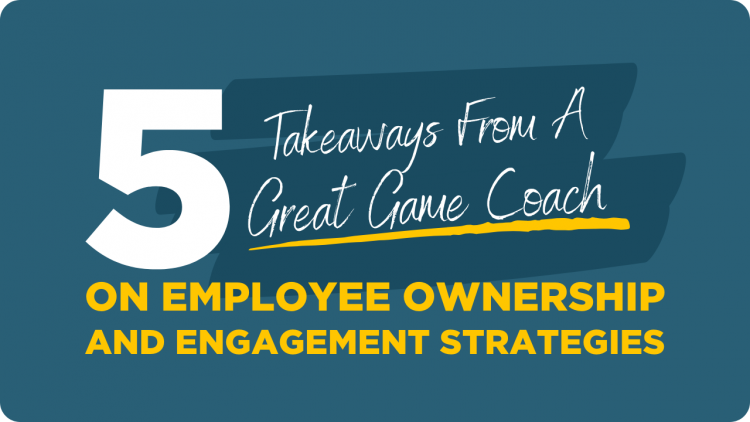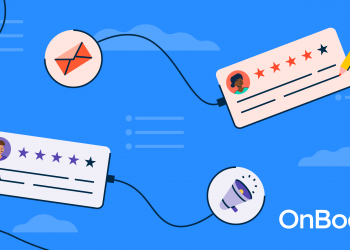We had Great Game™ Certified Coach, Anne-Claire Broughton on our podcast to share her expertise on the different forms of employee ownership. She discusses the benefits of employee ownership, initiatives her clients are using to provide financial literacy training to employees, and how to engage employees in a way that makes work fun.
Episode with guest: Anne-Claire Broughton
The Great Game of Business Certified Coach™
5 Takeaways From Great Game Certified Coach Anne-Claire Broughton
1. The Differences Between ESOPs and Co-ops
ESOP
ESOPs (Employee Stock Ownership Plans) are retirement plans regulated by Federal Retirement Law. They are a fantastic succession option for some companies, and a great way to engage and build wealth for people. The ESOP trust is the legal owner of the block of the corporation’s shares (up to 100% of the company) for the benefit of current and future employees. ESOPs do NOT require any contributions from the employee. Employees are paid the full value of their stock when they leave the company. There are many stories of frontline workers who retire with five or six-figure ESOP accounts. Those occurrences can change the trajectory of entire families in a super positive way.
The Pros and Cons of Employee Ownership
Cooperative
A worker cooperative is a member-owned business entity in which worker-owners have a controlling interest, and who elect the governing body on a one-member-one-vote basis. There are many different types of co-ops. There are producer co-ops, electrical co-ops, credit unions, and then there are some companies that have started off as worker co-ops, set up on a one-member-one-vote basis, but they’re not a free for all in terms of governments. They’re usually very clear about how they’re governed, and they still have managers. But again, people are set up to have some share of the profits and some voice in how things are run. Most cooperatives are smaller businesses, but there are larger cooperatives with upwards of 2,000 employees as well.
Forms of employee ownership have become more popular in recent times as we see baby boomers with privately-owned businesses retiring. If they don’t have a child to take over their business or a ready buyer, they have to figure out what to do with their business. Often they’re considering closing the doors, and then they hear about employee ownership and the possibility of selling to employees.
Learn More About How This Cooperative Company Is Building Wealth For Individuals and Communities Around Them
2. Employee Ownership Should Be Paired With Education
You can’t just turn a company over to the employees through an ESOP or a worker co-op and expect them to be able to think and act like owners. You have to train them to think like owners — that’s where open-book management is so key. Transparency without education is worthless. Employee ownership will never be a motivator for employees if they don’t understand what that ownership stake means, how the company generates cash, and how they can impact the performance of the company to create wealth.
5 Rules For Building A True Ownership Culture
3. Using Book Clubs, Financial Literacy, and MiniGames As Engagement Strategies
Investing in continuous learning opportunities is a great way to engage your workforce. I would encourage all companies to do this, says Great Game Coach, Anne-Claire Broughton. Broughton shares how one of her clients, Chillibreeze, puts together book groups for employees based on departments in the company. Book groups read together and ask questions, all while getting trained in financial literacy. Each department then develops a MiniGame™ (short-term challenge to correct or improve a weakness). Between all of the departments, they may have 15 of these MiniGames all going at once, which is an incredibly efficient and fun way to learn, improve processes, and generate cash. Some MiniGames go after the low-hanging fruit — determining where the company isn’t efficient and ways the team can create standard operating procedures. They identify different areas they can benchmark, track how long tasks should take, and make it a goal to stick to those benchmark times. To further increase employee engagement and excitement, the company built a competition around the MiniGames. Chillibreeze brought in a judge to scale the performance of each MiniGame, and the company even awarded a trophy to the best-played MiniGame.
4. Our People Are Our Biggest Asset; Why Not Treat Them That Way?
Taking the extra time with employees always pays off. When first introducing financial literacy and The Great Game of Business to employees, there are always a few people that say, “Ah, Great Game™ is fine, but I don’t really understand it, I’m better off if I just keep doing the job, and miss the huddle” (company-wide meeting reviewing the company’s financials). But it’s important that you connect to every single one of your people, care about every single person, and find ways to reach them. Talk to them one-on-one, find out what questions they have, ask if they’re feeling intimidated by the financials, and ask what concepts they find difficult. Mentor them, because that extra time and attention always pays off. In this podcast episode, Great Game Coach Anne-Claire Broughton refers to a tour she had of Ambac International in South Carolina. She talks about how they really have engaged every employee at every level of the company. The employees clearly own the company, own The Game, run the huddles, and are working on connecting absorption. They’re figuring out how many labor hours they should be using for every single thing that they do. They really understand the business in a deep way. But this kind of mentality doesn’t happen overnight. Their CEO, Robert Isherwood, takes the time to empower them, talk to every single person, and nobody gets left behind. Broughton’s biggest piece of advice — don’t leave anyone behind. Our people are our biggest asset. Why not treat them that way?
5. People Learn Better When They Don’t Take Themselves Too Seriously
The big takeaway for the day — people learn better when they don’t take themselves too seriously. So keep it fun. Keep it a game. As Broughton says, “I guess I take my work seriously, but not myself. I like to have fun. And I think that adults learn better when they’re having fun.” Turn learning opportunities into games, give Kahoot quizzes, etc. Business doesn’t have to be boring or scary.
Articles To Help Rethink Learning At Work:
How to Have Fun At Work (And Learn Something At The Same Time)
7 Advantages of Killing Traditional Learning Environments
Source by www.greatgame.com











